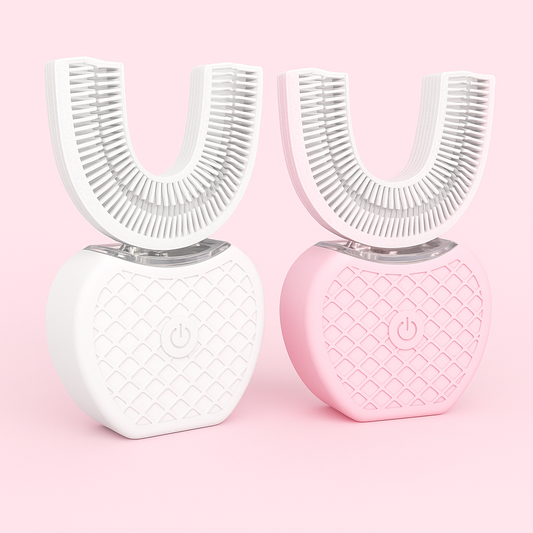Introduction to Xylitol
In the quest for healthier lifestyle choices and better oral hygiene, natural alternatives to sugar have become increasingly popular. Among these, xylitol stands out as a remarkable natural sweetener with proven benefits for oral health. As a sugar alcohol derived from plant fibers such as birch wood, corn cobs, and other hardwoods, xylitol offers a sweet flavor similar to sugar but with fewer calories and, most importantly, unique properties that help protect teeth. In 2025, understanding how xylitol works and how to incorporate it into your daily routine can make a significant difference in preventing dental cavities and maintaining a healthy smile.
What is Xylitol?
Xylitol is a five-carbon sugar alcohol (polyol) used as a sugar substitute in many food and dental products. Its chemical structure is similar to sugar, but it is metabolized differently in the body. Unlike regular sugar (sucrose), xylitol does not feed harmful bacteria in the mouth, which makes it an ideal ingredient for oral health products.
Originally discovered in the late 19th century, xylitol has been widely used in Europe and Japan for decades before gaining popularity in the United States and worldwide. Today, it is found in a variety of products including chewing gum, toothpaste, mouth rinses, candies, and even some baked goods.
The Science Behind Xylitol’s Oral Health Benefits
Understanding how xylitol benefits oral health requires a look at the role of bacteria and acid in tooth decay. The mouth naturally contains many types of bacteria, some of which produce acids when they consume sugars from food. These acids are responsible for eroding tooth enamel, leading to cavities.
Xylitol interrupts this harmful process in several ways:
- Inhibiting Bacterial Growth: Streptococcus mutans is the primary bacteria responsible for dental plaque and cavities. These bacteria cannot metabolize xylitol effectively, which starves them and reduces their numbers over time. This leads to less acid production and a healthier oral environment.
- Reducing Plaque Formation: Xylitol changes the composition of dental plaque, making it less sticky and easier to remove during brushing and flossing.
- Stimulating Saliva Production: Chewing xylitol gum increases saliva flow, which naturally neutralizes acids and provides minerals to repair tooth enamel.
- Enhancing Remineralization: Saliva rich in calcium and phosphate supports the remineralization of enamel. Xylitol facilitates this process by improving the uptake of these minerals into the teeth, strengthening them against decay.
Clinical Evidence Supporting Xylitol’s Effectiveness
Numerous scientific studies have validated the benefits of xylitol for oral health. Some of the key findings include:
- Reduction in Cavity Incidence: Clinical trials have demonstrated that regular use of xylitol-containing products can reduce the incidence of cavities by up to 40-60% compared to control groups using sugar or no treatment.
- Decrease in Harmful Bacteria: Research shows a significant decline in Streptococcus mutans populations after consistent xylitol use, leading to healthier oral microbiomes.
- Improved Saliva Quality: Studies report increased saliva flow and enhanced buffering capacity, which protects teeth from acid attacks.
- Positive Effects in Children and Adults: Both pediatric and adult populations benefit from xylitol, making it a versatile option for the whole family.
How to Incorporate Xylitol Into Your Oral Care Routine
To maximize the oral health benefits of xylitol, consider the following strategies:
- Chew Xylitol-Containing Gum: Chewing gum with 5-10 grams of xylitol daily, divided into multiple sessions, especially after meals, is one of the easiest and most effective ways to combat cavities.
- Use Xylitol Toothpaste and Mouthwash: Many leading oral care brands now include xylitol in their formulations. Regular use can provide continuous benefits throughout the day.
- Consume Xylitol-Sweetened Snacks: Replace sugary candies and mints with xylitol-sweetened alternatives to reduce sugar intake and protect your teeth.
- Read Product Labels Carefully: Not all sugar-free products contain xylitol, so check ingredient lists to ensure you are getting authentic xylitol benefits.
Additional Health Benefits of Xylitol
While the primary focus of xylitol is oral health, it offers other advantages worth noting:
- Lower Glycemic Index: Xylitol has a very low impact on blood sugar and insulin levels, making it a suitable sweetener for people with diabetes or those monitoring their carbohydrate intake.
- Supports Ear and Respiratory Health: Some studies suggest that xylitol may reduce the risk of ear infections by inhibiting bacterial growth in the upper respiratory tract.
- Calorie Reduction: Xylitol contains about 40% fewer calories than sugar, aiding weight management efforts.
Safety Considerations and Potential Side Effects
Xylitol is generally recognized as safe for human consumption by health authorities worldwide, including the FDA. However, there are some important safety considerations:
- Digestive Sensitivity: Consuming large amounts of xylitol too quickly can cause digestive discomfort, including bloating, gas, and diarrhea. It's best to start with small doses and increase gradually.
- Pet Toxicity: Xylitol is extremely toxic to dogs and some other pets, causing rapid insulin release and potentially life-threatening hypoglycemia. Keep xylitol-containing products out of reach of pets.
- Consultation for Medical Conditions: Individuals with specific health conditions or sensitivities should consult healthcare professionals before making significant changes to their diet involving xylitol.
Choosing the Best Xylitol Products in 2025
With the rising popularity of xylitol, the market has expanded, offering many options for consumers. When selecting xylitol products, consider the following:
- Purity and Source: Look for products that use high-quality, naturally sourced xylitol without unnecessary additives.
- Concentration: Higher concentrations of xylitol (around 70-100%) in gums and candies tend to be more effective for oral health benefits.
- Brand Reputation: Choose trusted brands with positive reviews and scientific backing.
- Complementary Ingredients: Products that combine xylitol with fluoride or other beneficial compounds can offer enhanced protection.
Frequently Asked Questions About Xylitol
Is xylitol safe for children?
Yes, xylitol is safe for children and is often recommended for promoting healthy teeth from a young age. However, it should be given in appropriate amounts and under supervision to avoid choking hazards with gum or candies.
Can xylitol replace sugar entirely?
While xylitol can replace sugar in many applications, it is not suitable for all recipes or uses. Its cooling effect and different chemical properties may alter taste and texture in some foods.
How quickly does xylitol work to improve oral health?
Regular use of xylitol can show benefits within a few weeks, but sustained use is necessary for long-term cavity prevention and oral health maintenance.
Conclusion
As we move further into 2025, xylitol remains a scientifically supported, natural sweetener that offers exceptional oral health benefits. From reducing harmful bacteria and acid production to enhancing remineralization and stimulating saliva flow, xylitol addresses multiple factors that contribute to tooth decay. Incorporating xylitol into your oral care routine through gums, toothpastes, and other products can significantly reduce your risk of cavities and improve overall dental health.
By understanding how xylitol works and using it correctly, you can enjoy the sweet taste without the damaging effects of sugar. Alongside good oral hygiene practices and regular dental visits, xylitol is a powerful tool in the fight against cavities in 2025 and beyond.


